With all of these moves towards digital delivery in entertainment, we thought it would be worthwhile understanding one of the key items in this process – how to get the digital content to UK households.
Steve Kennedy is an acknowledged expert in the telecoms and data networks field, so it was an obvious choice for us to ask him to write an overview of how other IP operators can compete with BT – by creating their own data network. To do this, they need to put their own equipment into the telephone exchanges that connect to peoples houses. That process is Local Loop Unbundling (LLU).
Over the next three days we’ll give you a full background in LLU in the UK.
 What is Local Loop Unbundling (LLU)?
What is Local Loop Unbundling (LLU)?
LLU is the ability to put equipment into BT exchanges (know as DLEs – Digital Local Exchange) and take over the copper line into the premises.
There are two forms known as Option 2 (metallic path facility as BT call it) and Option 4 (shared metallic path facility).
Option 4 characteristics: –
-
Operator takes over the line and only offers broadband services (of course they can offer services on top of the basic connectivity).
-
BT retain control of voice services.
-
BT send out the “Blue Bill”, this includes line rental and voice traffic which means they can still market their services to the customer.
Option 2 characteristics: –
-
Operators takes over the line completely.
-
No BT blue bill.
Once the operator has put the equipment into the DLE, then they have to connect it back to their own network. BT can provide this using BES (Backhaul Extension Services) or the operator can use their own connectivity solution. Most operators don’t have the coverage to provide their own connectivity solutions.
DLEs
BT have around 5,600 DLEs across the UK (i.e. telephone exchanges) and these have customers connected to them. Around 1,200 are in densely populated areas, another 800 or so with medium populations and the rest in rural areas.
 Any operator wanting to offer broadband (and possibly voice) has to put their equipment in these DLEs. However there is a cost to unbundling an exchange (around 100,000 including backhaul) which means operators are only targeting the most densely populated ones.
Any operator wanting to offer broadband (and possibly voice) has to put their equipment in these DLEs. However there is a cost to unbundling an exchange (around 100,000 including backhaul) which means operators are only targeting the most densely populated ones.
LLU Operators
Operators who have unbundled exchanges are: –
Any operator with a “-” after has been acquired by another player.
* AOL (UK) Ltd – CPW
* Be Unlimited – O2
* Bulldog Communications Ltd – Users to Pipex, LLU C&W
* Cable and Wireless Ltd
* Computacenter PLC
* Easynet – Sky
* Eaton Power Solutions
* eXstream Networks Ltd
* Groestar Ltd
* Kingston Communications (Hull) Plc
* Lancaster University
* Leanwood Communications Limited
* Lumison
* Nestor Electronics Ltd
* Opal Telecom (CPW)
* Pipemedia Ltd
* Pipex Internet Ltd – who knows, up for sale
* Tiscali
* T-Mobile
* UKBB
* Unisys Ltd
* Updata Infrastructure UK Ltd
* Videonetworks Ltd – Tiscali
* Wanadoo
* WB-Internet Ltd
* Zen Internet Limited
Some of the smaller players are conducting trials and some are just offering private services (like Updata who offer connectivity solutions to councils etc).
Tomorrow, the penetration of LLU in the UK and the economics of it.
 You’ll know from our Joost coverage that we think it’s definitely one to watch and to that end we want to share the love a little.
You’ll know from our Joost coverage that we think it’s definitely one to watch and to that end we want to share the love a little.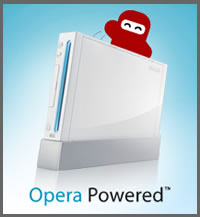 That all changes today when the full version becomes available for download through the Wii Shop Channel – the area on the console where additional applications and services are accessed.
That all changes today when the full version becomes available for download through the Wii Shop Channel – the area on the console where additional applications and services are accessed.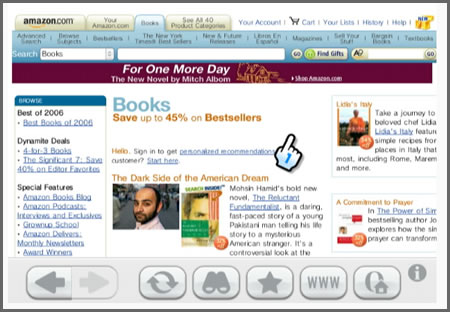
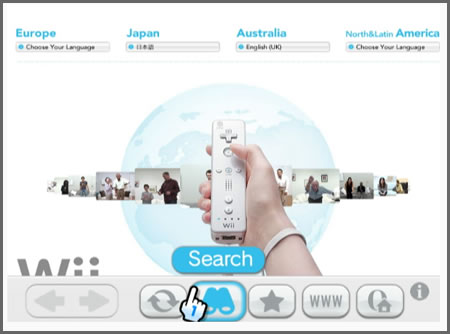
 It’s not just old content that will be available, but new productions from Paramount including DreamWorks titles, which will be among the latest films available.
It’s not just old content that will be available, but new productions from Paramount including DreamWorks titles, which will be among the latest films available.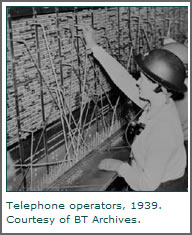 What is Local Loop Unbundling (LLU)?
What is Local Loop Unbundling (LLU)? Any operator wanting to offer broadband (and possibly voice) has to put their equipment in these DLEs. However there is a cost to unbundling an exchange (around 100,000 including backhaul) which means operators are only targeting the most densely populated ones.
Any operator wanting to offer broadband (and possibly voice) has to put their equipment in these DLEs. However there is a cost to unbundling an exchange (around 100,000 including backhaul) which means operators are only targeting the most densely populated ones.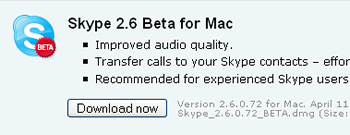 While they’ve been tightening out various bits and pieces, they’ve launched an important new feature, Call Transfer on the Mac first, going against the other Skype releases that have dragged behind the PC.
While they’ve been tightening out various bits and pieces, they’ve launched an important new feature, Call Transfer on the Mac first, going against the other Skype releases that have dragged behind the PC.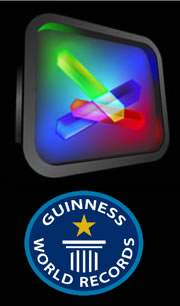 We weren’t expecting to be so
We weren’t expecting to be so 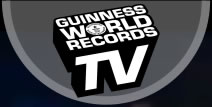 They’ve got 400 hours of it, so there’s plenty more to come.
They’ve got 400 hours of it, so there’s plenty more to come. Yvette Alberdingkthijm, EVP of content strategy and acquisition Joost took the pun-ing route of “We are delighted to have Guinness World Records on board and look forward to offering our viewers record breaking content.”
Yvette Alberdingkthijm, EVP of content strategy and acquisition Joost took the pun-ing route of “We are delighted to have Guinness World Records on board and look forward to offering our viewers record breaking content.”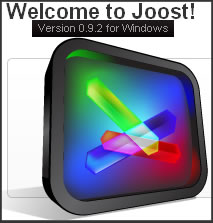 All was revealed today as to why. The SSL certificates that are used to encrypt all communication between the clients and the Joost servers ran out, as certificates do each year.
All was revealed today as to why. The SSL certificates that are used to encrypt all communication between the clients and the Joost servers ran out, as certificates do each year. The program is being headed up by code-fan pin-up girl
The program is being headed up by code-fan pin-up girl 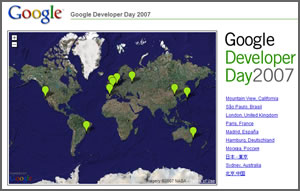 Well, people become more familiar with how to write programs to use their applications via the published API’s, which means the potential for extra advertising income for Google.
Well, people become more familiar with how to write programs to use their applications via the published API’s, which means the potential for extra advertising income for Google. In the same way that UK frequencies are being freed up by analogue TV going digital, a big chunk of valuable frequency will also be coming up for grabs in the US too. The big difference is that the US one is coming up a lot sooner, with the US government having mandated that their analogue switch off occurs on 19 Feb 2009.
In the same way that UK frequencies are being freed up by analogue TV going digital, a big chunk of valuable frequency will also be coming up for grabs in the US too. The big difference is that the US one is coming up a lot sooner, with the US government having mandated that their analogue switch off occurs on 19 Feb 2009.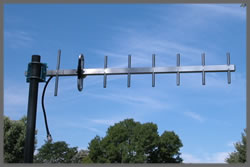 The 700-megahertz frequency is highly favoured as it has a significant capacity, good range and can easily penetrate buildings and other structures.
The 700-megahertz frequency is highly favoured as it has a significant capacity, good range and can easily penetrate buildings and other structures. Previously released as a featherweight 2.1 pounds laptop sporting a 40/80GB hard drive and 12.1 inch display, Sony have just cranked up the VAIO’s desirability rating to wanton craving with the news of a 32GB Solid State Disk option.
Previously released as a featherweight 2.1 pounds laptop sporting a 40/80GB hard drive and 12.1 inch display, Sony have just cranked up the VAIO’s desirability rating to wanton craving with the news of a 32GB Solid State Disk option. Without a hard drove rattling away inside, the standard battery life has been extended by half an hour, giving a very generous 6.5 hours in total. Users investing in the longlife ‘L’ battery can enjoy a battery life that will leave even the Duracell bunny in need of a fag and lie down, with Sony claiming a whopping 12.5 hours of use.
Without a hard drove rattling away inside, the standard battery life has been extended by half an hour, giving a very generous 6.5 hours in total. Users investing in the longlife ‘L’ battery can enjoy a battery life that will leave even the Duracell bunny in need of a fag and lie down, with Sony claiming a whopping 12.5 hours of use.